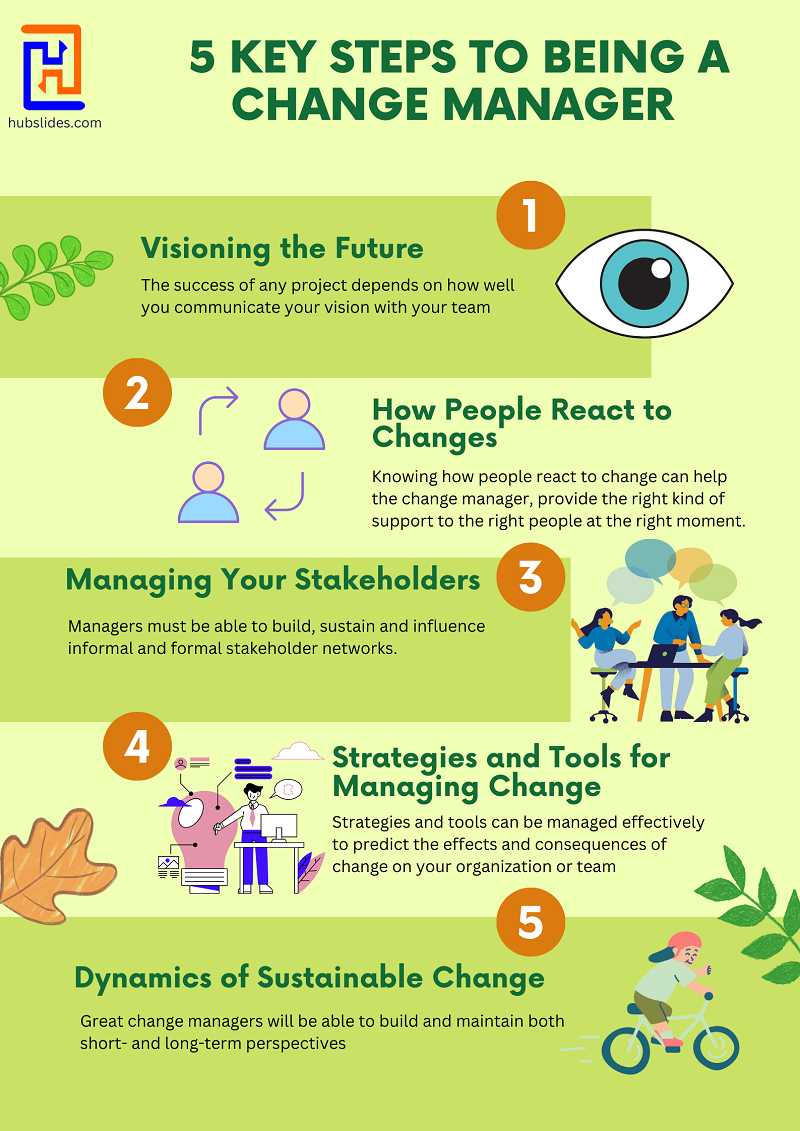What To Learn In A Change Management Training

Change management can be thought of as the process of managing employees and the Transitional periods are crucial for any organization. It is best to use a combination of best practices, tools, skills, and knowledge.
What is Change Management?
Change Management (also known as organizational management) is the art of engaging stakeholders effectively, minimizing risk to efficient adoption, and maximizing benefits through a focus on the organizational, cultural, and people aspects of business transformations.
Goals of Change Management
Change management has one goal: To reduce distractions such as shifting priorities or goals, while still focusing on the bigger picture.
What's Change Management Training?
Training in change management is the ability to develop individuals and extend teams to manage the change process. This ensures a successful outcome.
You are ultimately going to have an impact on one or more of these things when you make any changes to your organization.
- Process
- Systems
- Organization structure
- Roles in the job market
Each of these elements will be highly personal to the existing teams.
5 Key Steps to Being a Change Manager
Organizations need to either hire people who have successfully managed similar projects or provide support through their leadership and development programs to manage a change program.
1. Visioning the Future
The success of any project depends on how well you communicate your vision with your team and help them to define their roles and manage expectations.
2. How People React to Changes
Knowing how people react to change can help you, the change manager, provide the right kind of support to the right people at the right moment. This will reduce resistance and maximize the contributions of those who support and champion the project. In the end, this will result in more people working with you and fewer against you.
3. Managing Your Stakeholders
Managers must be able to build, sustain and influence informal and formal stakeholder networks. These networks will be useful in delivering key stages of the project and as a feedback resource to identify areas of conflict or key partners who can be relied on to resolve problems.
4. Strategies and Tools for Managing Change
How can you determine the best strategy to implement your change program? How can you identify and track change accelerators? These strategies and tools can be managed effectively to predict the effects and consequences of change on your organization or team.
5. Invoking the Dynamics of Sustainable Change
Planning is key to any successful change program. Great change managers will be able to build and maintain both short- and long-term perspectives, anticipate potential obstacles, and motivate their teams to succeed.
How to Manage Organizational Change
- Take Care
- Transparency is key
- Tell the truth
- Communicate
- Make a road map
- Offer training
- Invite Participation
- Do not expect to implement change overnight
- Monitor and Measure
- Demonstrate strong leadership

Kotter's 8-Phase Model for Change Management
These are the Eight Stages of Kotter listed in this article
Step 1: Create an Urgency
First, leaders and employees must be made aware of the importance of this change. Change leaders may create scenarios to show what could happen if the status quo is maintained to support the call for change. To identify the impact of change on your stakeholders (or lack thereof), you can use a SWOT analysis.
Step 2: Create a Guiding Alliance
By attracting forward-thinking people, you can build a team of advocates. These early supporters should come together to support the cause of change. You should have a mix of people from different departments, with different job functions and skills.
Step 3: Create the Vision and Strategy
To help you achieve your goals, create a vision and develop concrete strategies. These should be communicated in a powerful and well-prepared speech.
Step 4: Communicate Your Vision
Don't be afraid to share the vision with employees and executives. This builds trust and motivates.
Step 5: Clear the Obstacles
Is there a structure in your company that is slowing down the pace of change? Examine the status quo to identify any unfavourable organizational structures or routines.
Step 6: Make Short-Term Success Visible
In the initial stages of implementation, avoid setting long-term and time-consuming goals. Instead, set short-term and easily achievable goals. You can focus on the low-hanging fruits and win some early wins. This will encourage people to support the effort. Recognize those who are supportive of change.
Step 7: Accelerate the Change
Analyze each milestone and reflect on what went well. Your advocacy group should always be open to new ideas and goals.
Step 8: Anchor Changes in Corporate Culture
Don't hold on to the anchor! Only when your goals are solidly anchored to the corporate culture will you consider the change process successful.
There are many tools and techniques that you can use in each phase to move the project forward.
Please share your ideas in the comment box below if this well-researched post has helped you learn something new.
Author Bio
This user has not submitted a user bio yet
Article Comments
No Comments!
At present there are zero comments on this article.
Why not be the first to make a comment?
Similar Articles
Sponsor
Search Articles
Experts Column
Latest Articles
Featured Articles
Most Popular Articles












